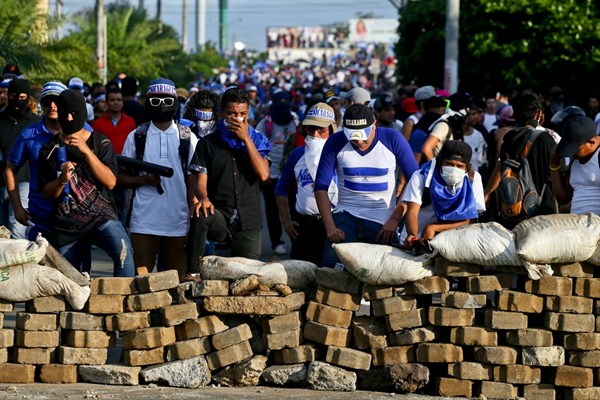At a time when the international order is being challenged and decades-old conflicts appear to be in flux, perhaps it isn’t a surprise that anti-government protests in an impoverished Central American country have fallen under the radar. But the escalating unrest in Nicaragua, less than 1,000 miles from U.S. shores, could well morph into a catastrophe that grabs global attention, if the government there continues along its uncompromising path of repression.
The toll of clashes between protesters and government forces has spiked to at least 148 dead and well over 1,000 wounded in recent weeks, according to the Nicaraguan Center for Human Rights. As President Daniel Ortega’s regime refuses to budge over calls for negotiations, resorting to tactics reminiscent of Latin America’s darkest days, his opponents are becoming even more determined to push ahead. A key player in the protests, the National Alliance for Justice and Democracy, has called for a full national work stoppage on Thursday, a 24-hour “peaceful civil strike covering the entire country and all economic activities.” The stakes are growing by the day.
The drama started unexpectedly two months ago, with pensioners protesting cuts to their meager retirement allowances. The government of Ortega and his wife, Vice President Rosario Murillo, had every reason to feel confident that the future was secure for their dynastic project. After all, the former Marxist rebel, who overthrew a despised, corrupt regime back in the late 1970s and fought a U.S.-backed militia in the 1980s, has rewritten the constitution to make it possible to remain in power, while packing the courts and election boards and securing control of all the levers of power. All along, he enjoyed strong popular approval.

